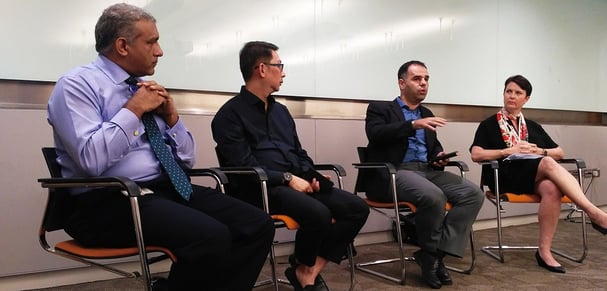In the recent Energy Risk discussion organized by Global Association of Risk Professionals (GARP) in Singapore, Mr. Miguel Laburu from TUV Rheinland was invited to join the panel discussion as a representative to share some insights on the technical aspects of solar projects.
Solar investments needs to be affordable and reliable, and ultimately: profitable. With those prerequisites, many investors have been looking to the Asia Pacific region in the last decade as the ideal place for solar projects. Nonetheless, given the diversity of market in the region, investors need to be risk-savvy in placing their investment, and this is where Mr. Laburu shared with the participants:

Australia emerges as the most established market in the region. It has the critical population size for energy demand, and the business environment gives a high level of assurance. There are many reputable international banks involved in Renewable Energy projects in Australia, and that helps bringing in a superfluous amount of capitals to finance the solar projects. However, as any established market, the level of requirements is placed on the high side as well. Any decent solar project in Australia is expected to involve extensive documentation and very detailed technical studies which can be overwhelming for a first-time solar investor.
Malaysia’s solar industry is rising as one of the most promising markets in the region. The industry has been established for a while, although not as much as Australia, which means the ‘Awareness phase’ is more or less completed, and you do not need to start from ground zero to do the legwork on educating and convincing the market. Malaysia mainland has a very stable grid, in comparison to other Asian countries. The challenge in Malaysian solar market is not only about the technical side, but also in managing the market stakeholders. If you are entering the Malaysian market, getting a partner who is aware of the stakeholder’s dynamics is a highly recommended move.
In the other hand, Vietnam has released in the last month the new solar FiT policy with the aim of developing the market to VND 2,086 / kWh (equivalent to USD 9.35 cents / kWh). This will support the deployment of the solar projects latent during recent years, including many small-scale rooftops installations that are currently being deployed.
Indonesia, the highest populated country in Southeast Asia region, naturally appears to have the biggest potential in solar project in the region. However its need of a solid and attractive regulation and a development in its transportation infrastructure, creates a challenging situation. Sometime the site is located in a remote island in East Indonesia where the port infrastructure cannot comply with the needs due to the size; sometime there is no existing connection between the port and the project site; and some other time, the port is non-existing either.
Philippines has a similar geographic characteristics with Indonesia, having numerous islands scattered across the country, but their issue is different. Their solar plants are flourishing in certain areas –such as Negros–, but the generated energy is contained within the island, as there are no inter-islands grid infrastructure readily available. Presently, the recommended solution for this situation is the use of store systems, and then distribute it physically.
 In summary, investment opportunities in infrastructure solar PV projects are growing in the region more than ever. However, investors, lenders and developers need to look beyond the traditional financial risks and evaluate other sources of risks as environmental and technical. Taking a help from a specialized independent consultancy with a long and solid tracking record is definitely one way to mitigate these additional risks. Regardless of the investment, and like anything else: you should never compromise on quality.
In summary, investment opportunities in infrastructure solar PV projects are growing in the region more than ever. However, investors, lenders and developers need to look beyond the traditional financial risks and evaluate other sources of risks as environmental and technical. Taking a help from a specialized independent consultancy with a long and solid tracking record is definitely one way to mitigate these additional risks. Regardless of the investment, and like anything else: you should never compromise on quality.
More information
- Find out relevant services on solar plant that TÜV Rheinland offers in our service page.
- Need help on Solar investment assessment and consultation? Ask TÜV Rheinland.
- Keep up-to-date to changes in regulatory and standards by subscribing to our mailing list.


